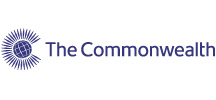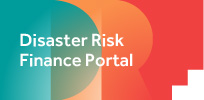Countries Search
Countries
Filters
Filter your search by checking and unchecking the boxes below.
Before or After the disaster?
Own or Transfer the risk?
Instrument type?
Countries
Instruments Available
The ADB Contingent Disaster Loan which is part of their policy-based lending, is a loan provided by the ABD which is linked to a disaster.
A key feature of Contingent Disaster Financing is that it supports essential policy reforms to strengthen disaster preparedness that are to be completed before a natural disaster occurs. Once a CDF is approved for a country, it remains active until a disaster occurs. The country can then quickly access the approved financing to help relieve fiscal constraints for urgent relief and recovery efforts and avoid disruptive reallocations from priority budget programs.
The ADB Contingent Financing Grant is a grant made available upon a soft trigger (for instance, declaration of state of emergency) with a disbursement-linked repayment schedule.
The ADB Contingent Financing Loan is a loan made available upon a soft trigger (for instance, declaration of state of emergency) with a disbursement-linked repayment schedule.
The ADB Emergency Assistance Grant is a standard emergency assistance grant provided by the ADB.
The ADB Emergency Assistance Loan is a standard emergency assistance loan provided by the ADB.
The Emergency Response Coordination Centre (ERCC) supports a coordinated and quicker response to disasters both inside and outside Europe using resources from the countries participating in the EU Civil Protection Mechanism.
Grants provided to Red Cross/Crescent National Societies (rather than governments) for emergency relief and all activities which meet immediate needs caused by sudden, slow-onset or imminent disasters, including monitoring and evaluation.
Application guidelines:https://media.ifrc.org/ifrc/wp-content/uploads/sites/5/2020/07/20200511_DREF_Guidelines_ONLINE-_OPT_FINAL-1.pdf
Loans provided to Red Cross/Crescent National Societies (rather than governments) for emergency relief and start-up response to sudden, slow-onset or imminent disasters.
Application Guidelines: https://media.ifrc.org/ifrc/wp-content/uploads/sites/5/2020/07/20200511_DREF_Guidelines_ONLINE-_OPT_FINAL-1.pdf
Longer term for serious medium-term balance of payments problems because of structural weaknesses that require time to address, the IMF can assist with the adjustment process under an Extended Fund Facility (EFF).
The Flexible Credit Line (FCL) was designed to meet the demand for crisis-prevention and crisis-mitigation lending for countries with very strong policy frameworks and track records in economic performance. This instrument was created as part of the process of reforming how the IMF lends money to countries that find themselves in a cash crunch, with the idea of tailoring its lending instruments to the diverse needs and circumstances of member countries. While none of these countries have so far drawn down on these lines, the FCL provides a valuable backstop and helps boost market confidence during the period of heightened risks.
The global financial crisis highlighted the need for effective global financial safety nets to help countries cope with adverse shocks. A key objective of recent lending reforms was to complement the traditional crisis resolution role of the IMF with more effective tools for crisis prevention. The Precautionary and Liquidity Line (PLL) is designed to flexibly meet the liquidity needs of member countries with sound economic fundamentals but with some limited remaining vulnerabilities which preclude them from using the Flexible Credit Line (FCL).
The new SBA framework has expanded the range of high access precautionary arrangements (HAPAs), a type of insurance facility against very large potential financing needs. Precautionary arrangements are used when countries do not intend to draw on approved amounts, but retain the option to do so should they need it. In an economic crisis, countries often need financing to help them overcome their balance of payments problems. Since its creation in June 1952, the IMF’s Stand-By Arrangement (SBA) has been used time and again by member countries, and it is the IMF’s workhorse lending instrument for emerging and advanced market countries. The SBA was upgraded in 2009 along with the Fund’s broader toolkit to be more flexible and responsive to member countries’ needs. Conditions were streamlined and simplified, and more funds were made available up front. The new framework also enables broader high-access borrowing on a precautionary basis.
Grants extended under this program aim at mitigating the suffering of victims of all kinds of catastrophes around the world, including in Opec Fund for International Development (OFID) Member Countries. OFID emergency aid is channeled through specialized relief agencies, such as the IFRC, UNHCR, UNOCHA and the WFP.
Start Fund is a multi-donor pool fund managed solely by NGOs for NGOs, with delegated authority from its donors. The fund is designed to disburse rapid emergency funding within 72 hours of an alert. It covers smaller ‘under-the-radar’ emergencies which often received little or no media attention and therefore attract little or no public funding.
GRiF is a multi-donor trust fund (MDTF) managed and implemented by the World Bank, with initial contributions from the governments of Germany and the UK. GRiF provides grants imbedded as part of World Bank projects to pilot and scale up financial solutions that help countries be financial prepared to respond to climate shocks, disasters, and crises. World Bank projects with GRiF funds are already underway in a number of Commonwealth countries: Malawi, Mozambique, Sierra Leone, and Jamaica.

